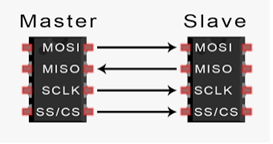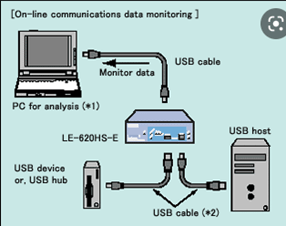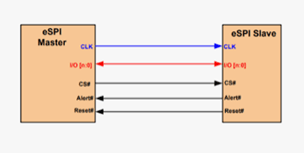
Serial Communication Protocols
Serial Communication Protocols
Let's break down this into three sections. Communication is a well-known term that refers to the transfer of information between two or more mediums. In embedded systems it refers to the exchange of bits of data between two microcontrollers. Communication protocols govern the interchange of data bits in microcontrollers. Serial Communication Protocol is used when data is transmitted in sequence, one after the other. In Serial Communication, the data bits are sent one by one via the data bus or communication channel in a sequential way. Let’s check out some of the serial communication protocols:
CAN Protocol:

Robert Bosch (of GmbH) invented the CAN (Controller Area Network) protocol in the 1980s. Manufacturers began incorporating modern features into their automobiles in the late 1970s, such as AC, Central-door locks, anti-lock brake systems, airbags, gear control, engine management systems, and so on. Even while these new features were well received by drivers (consumers), they include heavy and bulky cables, costly mechanical parts, and complicated designs, resulting in an increase in the cost and complexity of in-vehicle electrical and mechanical systems.
SPI Protocol:

The SPI protocol has been widely used for short distance communication in embedded devices since its introduction by Motorola in the late 1980s. Devices connect with each other using a master-slave architecture utilising the SPI protocol. Although SPI may handle many slave devices, the number of master devices is restricted to one. Because it comprises of four signals, SPI is known as four-wire serial bus.
- Serial Clock (SCK)
- Slae Select (SS)
- Master Out Slave In (MOSI)
- Master In Slave Out (MISO)
USB Protocol:

It's no secret that USB, or Universal Serial Bus, is by far the most widely used protocol. In your house, you're likely to discover a dozen USB cords and connections. It was created in the 1990s with the goal of standardising the connecting of a variety of external devices to a computer. Nowadays, anything can be connected with these USB cables it may be printer, laptops, external drives etc. These cables have two special purposes:
- Communication with peripheral devices
- Supply power to connected devices
eSPI Protocol:

eSPI was created by the Intel Corporation as the replacement to the Low Pin Count (LPC) bus. eSPI refers for Enhanced Serial Peripheral Bus Interface - its major goal is to minimize the quantity of pins as comparing to LPC. The main purpose of eSPI Protocol:
- Minimize the quantity of pins required to mount on motherboard
- Used in applications that demand real-time flash sharing
We at Berry Fruits Technologies are using the popular serial communication protocol i.e., Serial Peripheral Interface. The common advantages due to which we selected SPI protocol to work with are:
- Separate MISO/MOSI data lines mean that it’s capable of full-duplex communication, meaning that data send and receive transmissions must alternate.
- Communications speed can be implemented at speeds of 10 Mbps or more.
- Complete flexibility for the bits transferred i.e. not limited to 8 bit word.
- Very simple hardware interfacing.
- Not limited to any maximum clock speed, enabling potentially high speed
- It’s faster than asynchronous serial.
- Supports multiple slaves.
- Supports full duplex communication.
- Have one unique bus signal per device called as chip select and all other signals are shared.
- No arbitration failure modes.
- No transceivers are needed.